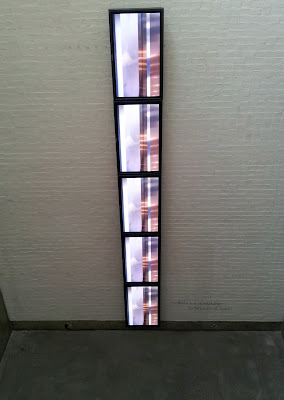Previous works by Claire Weetman have studied the movement of people within micro environments: How do individuals navigate a single street or public square, what are the places of transition in public spaces and how can people’s movement be documented within those spaces? During 2012 Weetman spent seven weeks in two of the most populated cities in the world; Istanbul and Shanghai. Explorations of these two megalopolises raised questions about population and public space, considering a macro scale of population movement, growth, and urbanisation: How do public spaces shape population movement on micro and macro scales? How is population shift evidenced in changing public spaces?
These questions have shaped two installations, developed over days and nights spent exploring Shanghai, unable to read Chinese characters, following signage, becoming disoriented, exploring a new area, retracing routes. People-watching in busy urban parks. Ballroom dancing between badminton players and plane trees to Chinese tango melodies. Emerging from underground stations on escalators, getting lost ascending and descending one shopping-mall-filled skyscraper after another. Always on the move, always somewhere new, always exploring.
The methods used to collect material for Weetman’s new work reflect her active exploration inspired by the constant rhythm of the city. Photographs and video clips documenting her passage in the city were filmed quickly and discreetly, barely breaking step as she navigated the city.
 |
| Installation view: a remarkable architecture of stairs” |
Shanghai’s population increased exponentially from 1979 to 2010. Surprisingly, for such rapid growth, per-capita living space has increased at pace with population. This ability to give more people more room within the same geographical area may seem an unlikely statistic, but it makes sense considering the development of the city landscape, from flat marshland to a vision of monumental skyscrapers in the space of 20 years.
Day to day, the physical experience of the city’s change from low rise to high rise life is the stairway. Linear stairs and escalators punctuate the bustle of the metro station, the pace of walkways on the street, and the calm of a 10-storey shopping mall. Henri Lefebvre refers to this in his text on “Rhythmanalysis” which discusses how “stairs rhythm the walk through the city, while at the same time serving as transition between different rhythms… their blatant monumentality imposes on the body and consciousness the requirement of passing from one rhythm to another rhythm, as yet unknown, to be discovered.”
Weetman was guided through the expansive city by a wide array of arrows, an internationally recognisable symbol, on ceilings, walls, and floors. As the skyscrapers are evidence of a changing public space due to population shifts, the increased use of arrows symbolise the increasing population. Without these arrows to direct the mass transit of people through Shanghai’s metro system it feels as though the heavily populated city might grind to a halt.
 |
| Installation view: “Would you tell me, please..” Interactive digital projection. |
Weetman collected photographs of arrows from across the city. In the act of collecting them, the arrows are transformed from a signifier to follow through the city into a marker that traces places the artist has been. Weetman presents this dual interpretation of the arrows in her digital interactive work ‘Would you tell me, please, which way I ought to go from here?’ She asks her audience who is guiding who? Am I exploring this place of my own free will? Do I follow the arrows? Are the arrows following me? Or, are my actions being pushed in a certain direction by external forces?
Claire Weetman is an artist who, since 2009, has worked internationally on exchanges, residencies and exhibitions in cities including Linz, Schiedam, Istanbul and Shanghai. She studied Fine Art at Liverpool John Moores University (2003), and in 2011 co-founded the artist-led studios and artist network Platform Art St Helens.
A selection of original photograms are available to purchase from the Bluecoat. This work has been made possible with a Re:View professional development bursary from a-n.